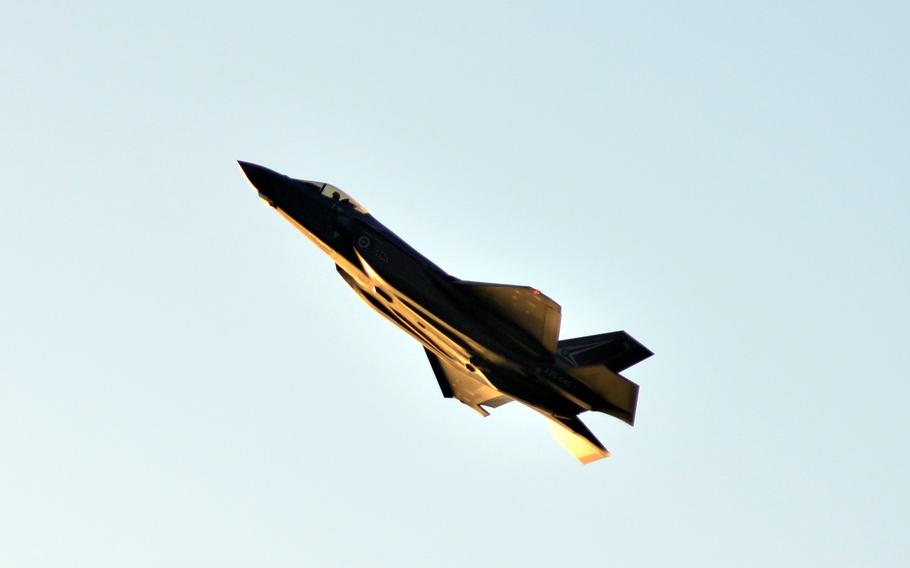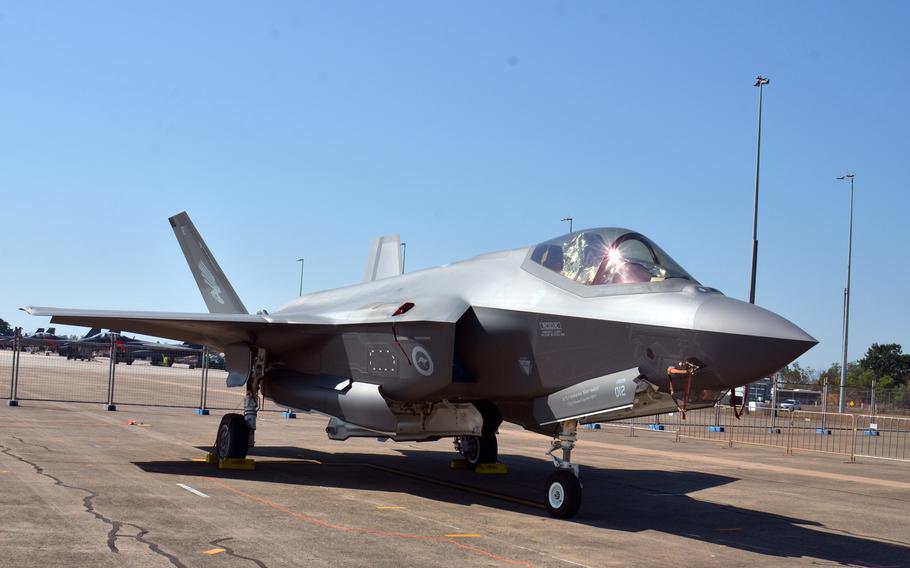
An Australian air force F-35A Lightning II flies over Mindil Beach in Darwin, Australia, Aug. 25, 2022. (Seth Robson/Stars and Stripes)
Australian F-35A Lightning II stealth fighters are in Japan for the first time to train alongside their Japanese counterparts, according to the Australian Defence Force.
Six F-35s taking part in the Bushido Guardian exercise have deployed to Komatsu Air Base in western Honshu, the largest of Japan’s four main islands, the defence force said in a news release Wednesday.
“Developing a mutual understanding in how we each operate the F-35A is essential to how Australia and Japan contribute to the collective security of the Indo-Pacific,” the head of Australia’s air force, Air Marshal Rob Chipman, said in the release. “Our aviators will develop their skills deploying overseas, [3,600 miles] from home, and forge professional relationships with their Japanese counterparts.”

An Australian air force F-35A Lightning II stealth fighter parks at Royal Australian Air Force Base Darwin in the Northern Territory, Aug. 27, 2022. (Seth Robson/Stars and Stripes)
Last month, a pair of Japanese F-35As trained in Australia’s Northern Territory on their first international mission. The drills out of Royal Australian Air Force Base Tindal happened shortly after an agreement between the two nations took effect, making it easier to train in each other’s territory.
A dozen U.S. Marine Corps F-35B fighters — the short-takeoff, vertical-landing version of the Lightning II — flew from RAAF Tindal during the biennial Pitch Black exercise in summer 2022. Based at Marine Corps Air Station Iwakuni near Hiroshima, Japan, they were the first Marine F-35s to operate from Australian soil, although F-35s had flown from ships off the country’s coast since 2019.
Australia is acquiring 72 F-35As from U.S. defense contractor Lockheed Martin, according to Australia’s air force.
Japanese F-35As are based at Misawa Air Base in northeastern Japan. Tokyo plans to acquire 105 F-35As and 42 F-35Bs; the latter will operate from the helicopter carriers JS Izumo and JS Kaga, which are being upgraded to support them.
Bushido Guardian, which kicked off Monday and runs through Sept. 15, demonstrates Australia and Japan’s commitment to a strategic partnership and will enhance the forces’ ability to work together on the ground and in the air, Chipman said.
“Collaborating in bilateral exercises across the Indo-Pacific provides both nations valuable experiences in overcoming the challenges of distance in our shared region,” he said.